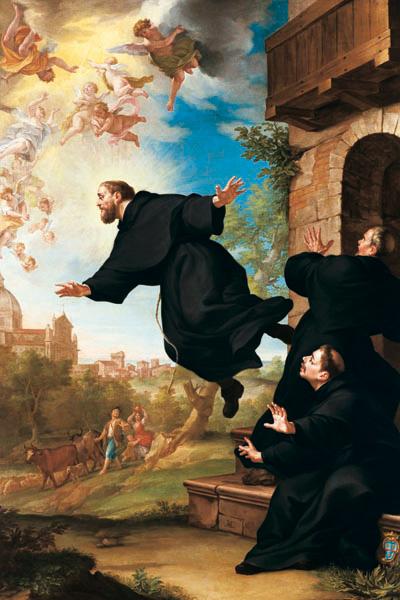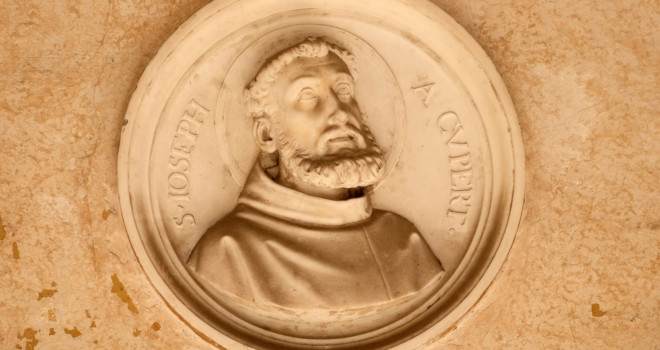Sometimes I feel surly because the majority of saints don’t look like me. They’re not married, or they don’t have large families, or they lived a long time ago in Europe or something, and generally didn’t have to deal with the spiraling decay of modern life while still striving for heaven.
I think they all look like they had it pretty easy. Even, in some respects, the martyrs. Take your St. Lawrences, for example. The ones who suffer shockingly abhorrent torture for love of Christ, and yet still manage to embrace their cross- and to do it with style. Other than a love of snarky retorts, what is there that is familiar to the modern ear?
There there’s modern saints and blesseds like Mother Teresa and St. John Paul II. Disciples who managed to touch the world, while still keeping close ties to the people around them. People who are, to the modern mind, something akin to spiritual rockstars.
In sainthood, everyone seems to be a rockstar.

But then you stumble across the curious case of St. Joseph of Cupertino. You may remember him from his iconography, which is odd even for an art form peppered with oddities. In most of the paintings of him, he seems to either be leaping out over crowds with jazz hands spread, or being dragged through the air by a wooden cross, several feet above the heads of the puzzled onlookers.
Like I said, there is some seriously bizarre imagery going on in his holy cards.
Joseph was born in Naples in 1603. His father had died before Joseph was born, and since he left large debts in his earthly wake, the family had to sell everything they owned, and Joseph was born in a stable. He began having ecstasies as a young child, which earned him the scorn and ridicule of his family. He also had a terrible temper, and was known for frequent, uncontrollable outbursts. He failed miserably in school, was absent-minded, sickly, and eventually developed a running ulcer that would never heal. He was a burden on his family with no obvious usefulness.
In 1620, a teenaged Joseph applied to and was accepted by the Capuchin friars as a lay brother, but his continued religious ecstasies made him “unfit for work”, and he was dismissed from the community, once again marked as a burden. His return home fueled his family’s mockery even more, which fueled his enraged outbursts, and in desperation to leave the spiral, Joseph begged the Conventual friars to allow him to come work in their stables.
It seemed that Joseph had finally found some peace. After several years of working for the friars, they accepted him into their Order, and he eventually was ordained a priest. This should have been the happy ending. Boy from impoverished beginnings, overcomes rage addiction through God’s grace, finds a way to be useful to the community, and becomes a member of the priesthood. Even if history never really remembered Joseph, it should have been enough.
But that’s not how it happened. Once ordained, the ecstasies that Joseph had experienced his whole life took on a whole new intensity. He began to levitate. While celebrating Mass, or saying the Liturgy of the Hours, people would witness Joseph rise several inches off the floor. He would sometimes fall into “fits of giddiness” as he described them, contemplating the sublime hand of God in nature. This fellow priests would cut and burn him during these spells, to try and bring him back to his senses, but it never worked. He was said to have a playful power over animals, even sending a sparrow to sing with a nuns in a local convent, and knew when the nuns treated the sparrow poorly.
Eventually, Joseph was sent to stand trial before the Inquisition in Naples. Whispers of “witchcraft” spurred by the general sense that Joseph was of no use to anyone, and was, in fact, a burden on the community were the charge brought against him. He was sentenced to a lifetime of seclusion, scuttled from one remote monastery to another, always transferred when word got out that this man who was known for his humility, healing powers, and strange ways was present at a particular location. Eventually, he was sent back to the Conventual friars, but only in the most severe of seclusion- a private chapel for him to say his daily Mass alone, meals taken completely in solitude, and as little contact with the rest of the community as possible, for his ecstasies had become so pronounced and intense that they threw the rest of the monastery into complete disorder.
Finally, St. Joseph died, was buried, and for a century, this puzzling man who didn’t fit in anywhere was forgotten. Then, in 1753, he was beatified. A decade later he was canonized. And the world was given a saint who was truly a bafflement. No rockstar saint like a Maximilian Kolbe or an Augustine. No intellectual giant like a Thomas Aquinas or Theresa of Avila. In Joseph of Cupertino, we’re given a deeply distressing example of someone who was scored by the secular world for having no obvious use, and equally scorned by the religious world for the same reason. He wasn’t smart. He wasn’t articulate. He had a horrible temper and demonstrated frightening supernatural abilities.
What do we do with a saint like Joseph? For me, you call him brother, because he is a saint who looks familiar. He is a saint who is perhaps familiar to lots of us. Unable to fit into the secular world, enduring its mockery, we at the same time lack the obvious qualities admired by the religious world. We don’t seem to be a useful fit anywhere. We are weird and odd and outsiders everywhere.
But, if we can keep our hearts fixed on the sublime hand of God in all things, like Joseph did, maybe we can fly our weird selves into the heart of Christ, which is big enough to hold us all, oddballs included.
✠















